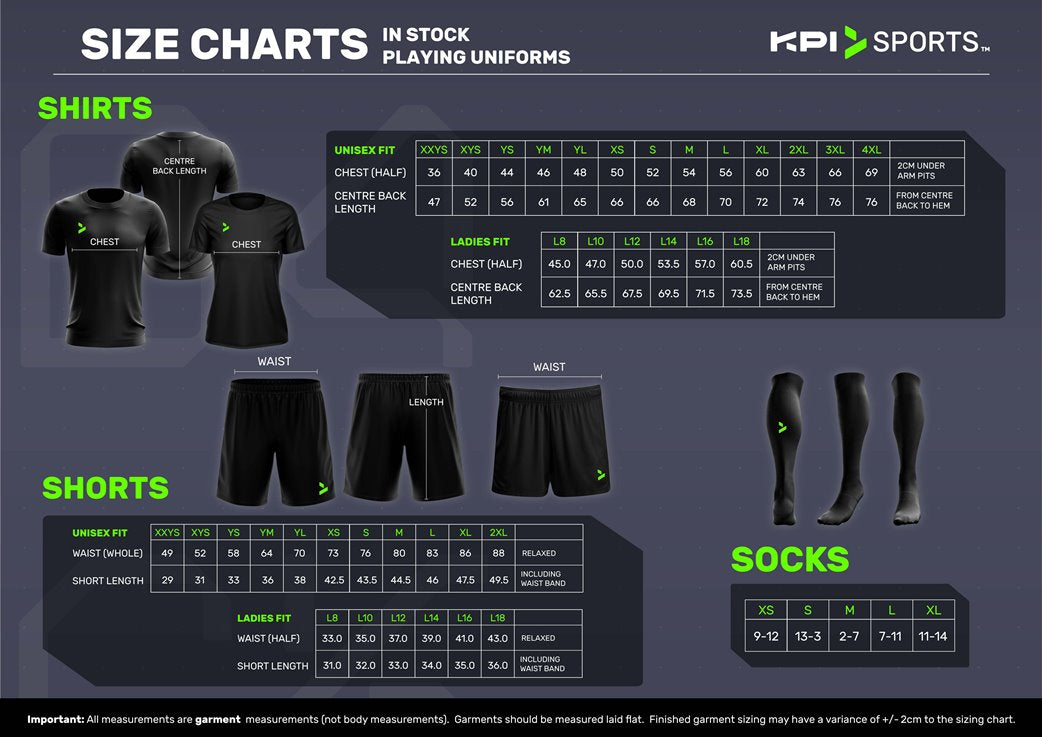Planning for Uniform Needs in Different Sports: A Practical Guide for PE Teachers

As PE teachers prepare students for a successful sports season, planning for uniform needs across various sports is essential. Each sport requires unique considerations, from functionality to durability, and organising uniforms effectively can make a big difference in student performance and team spirit. Here’s a general checklist for PE teachers to help assess and plan for the specific uniform requirements of different sports offered at their school.
General Checklist for Sports Uniform Planning
- Assess the Sport’s Specific Needs
- Consider Movement Requirements: Each sport has unique movement demands, so assess whether uniforms should allow for high mobility (as in basketball and soccer) or added protection (as in cricket or rugby).
- Climate and Season: Identify if the sport is played indoors or outdoors and consider seasonal weather. For outdoor sports, options like long-sleeved shirts or jackets might be necessary.
- Safety Standards: Some sports, like hockey, have specific safety requirements. Make sure uniforms are compatible with protective gear like shin guards or helmets.
- List Essential Uniform Components
- Core Items: Identify the required components, such as jerseys, shorts, socks, and accessories like sweatbands.
- Footwear: For sports requiring specific footwear, list necessary options (e.g., cleats for soccer, supportive sneakers for basketball).
- Additional Layers: For colder weather or outdoor sports, consider jackets, track pants, or even thermal layers as part of the uniform package.
- Consider the Uniform’s Design and Material
- Durability: Contact sports need durable fabrics that withstand wear and tear. For high-movement sports, lightweight and flexible materials can improve comfort.
- Breathability: Choose breathable fabrics in high-intensity sports like soccer or basketball, where athletes are more likely to overheat.
- School Branding: Ensure each uniform aligns with the school’s colors and branding for team cohesion. Partnering with a trusted provider like KPI Sports allows customisation to fit your school’s identity.
- Ensure Proper Sizing and Fit
- Variety in Sizing: Ensure uniforms are available in a range of sizes that cater to students’ different body types and ages. Include gender-neutral options for added inclusivity.
- Ease of Adjustment: Adjustable features, such as elastic waists or drawstrings, allow for a better fit and greater comfort, especially in fast-growing student populations.
- Ordering Sizing Sets: Consider ordering sizing sets for students who are unsure of their fit. Providing sizing sets allows students to try on sample garments and find their ideal size before placing an order. This step minimises the risk of incorrect sizing and ensures each student feels comfortable and confident in their uniform, reducing the need for exchanges or adjustments later on.
- Plan for Maintenance and Replacements
- Care Instructions: Provide parents and students with care tips for each item. This may include instructions to avoid certain detergents or drying methods that could damage the fabric.
- Replacement Cycle: Plan for the lifespan of each uniform. Contact sports may require more frequent replacements, while others may last multiple seasons.
Sport-Specific Uniform Needs
Below is a quick reference guide to assist in planning uniforms for some popular school sports:
- Basketball: Loose, breathable jerseys and shorts to allow free movement; lightweight materials to prevent overheating; supportive, high-grip footwear.
- Soccer: Flexible, durable jerseys with long and short-sleeved options; durable shorts; shin guards; cleats for outdoor fields or sneakers for indoor settings.
- Cricket: Collared shirts and long pants for sun protection; hats for added sun safety; comfortable, supportive shoes with a non-slip grip.
- Rugby: Reinforced, durable jerseys; padded areas or thicker fabric options for added protection; shorts and socks that stay in place during contact.
- Track and Field: Lightweight, moisture-wicking tops and shorts; footwear suited for different events (e.g., sprinting spikes); optional warm-up jackets.
- Netball: Breathable, moisture-wicking dresses or skirts with shorts underneath; supportive footwear for quick pivots; optional outer layers for warming up.
Additional Considerations for PE Teachers
- Budget Planning: Work with your school to create a budget that accounts for high-quality, durable materials that reduce the need for frequent replacements.
- Customisation Needs: With customisable options from KPI Sports, schools can add student names, numbers, or school logos to boost team pride and ensure easy identification.
- Communication with Parents: Provide clear information to parents about the required items and care guidelines for each sport, ensuring students are prepared for their specific needs.
Simplifying Uniform Planning with KPI Sports
At KPI Sports, we understand the unique uniform needs for each sport and are here to help PE teachers outfit their teams with functional, comfortable, and school-branded attire. By following this guide, teachers can ensure their students are equipped to represent their school with pride, unity, and confidence, on any field, track, or court. Partner with KPI Sports to customise uniforms tailored to the specific requirements of your sports program and keep your teams looking and feeling ready for action all season long.
TAGS:






